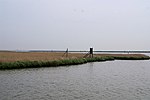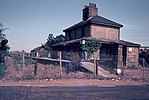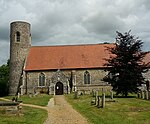Gariannonum

Gariannonum, or Gariannum, was a Roman Saxon Shore fort in Norfolk, England. The Notitia Dignitatum, a Roman Army "order of battle" from about AD 400, lists nine forts of the Saxon Shore in south and east England, among which one was called Gariannonor. It has been much discussed over the years in terms of spelling (Gariannonum, Garianonum, Gariannum), purpose (whether it really was intended for defence against Saxon raids), and location (whether it was Burgh Castle or the Caister-on-Sea site). The fort is listed as being commanded by the Praepositus equitum stablesianorum, implying its garrison was a cavalry of a form originated in the late 3rd century, the Equites Stablesiani. Both proposed sites show archaeological evidence for military occupation beginning at around the time this type of unit began use.The name Gariannonum is thought to derive from a river-name, Gariennus, mentioned in Ptolemy's Geography. This is thought to derive in turn from a Celtic root meaning "babbling river", which may refer to the River Yare, although much uncertainty remains.
Excerpt from the Wikipedia article Gariannonum (License: CC BY-SA 3.0, Authors, Images).Gariannonum
The Dell,
Geographical coordinates (GPS) Address Nearby Places Show on map
Geographical coordinates (GPS)
| Latitude | Longitude |
|---|---|
| N 52.582 ° | E 1.652 ° |
Address
Burgh Castle Roman Site
The Dell
NR31 9PZ
England, United Kingdom
Open on Google Maps










